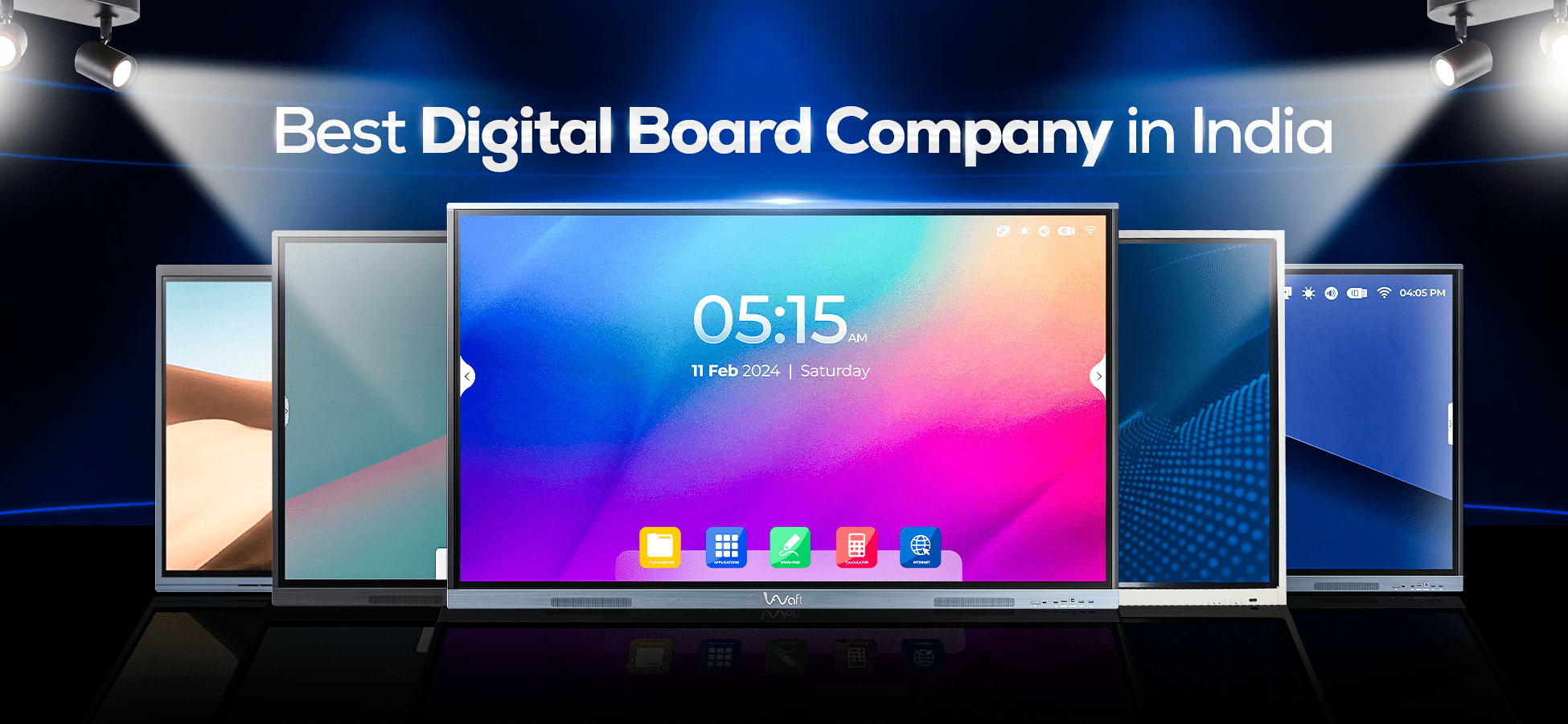Introduction
Ever wondered why students of the 90’s or even Gen Z hated going to school and threw tantrums whenever it was about studying?
But today kids are keen to attend lectures, what evolved?A couple of decades ago classrooms didn’t offer a creative approach. Students couldn’t help but get bored and there was almost zero source of engagement. It was time-consuming to draw shapes and students faced trouble grasping geometry and chemistry as these were complex subjects and couldn’t be understood manually.
But in this digital era of drastic changes, Students are motivated and interested in learning. All of this is attainable with the use of digital boards in classrooms and coaching. With the implementation of interactive flat panels in classrooms, it has successfully increased interaction between students and teachers.
Digital classrooms offer interaction on a completely new level, promote lively discussions, and assist students in developing a deeper comprehension of the subjects and issues.
In order to better comprehend how interactive flat panels have boosted classroom productivity, let's first define what a digital panel is.
What is an Interactive Flat Panels?
An interactive flat panel is a portal to the world of knowledge and collaboration. It is a window into the future of education and business, where learning and innovation are limitless. With its touchscreen interface and powerful features, the interactive flat panel is a tool that can help us all achieve our goals.
Imagine a classroom where students can interact with educational content in a fun and engaging way. Or imagine a business meeting where team members can brainstorm ideas and collaborate on projects in real-time. The interactive flat panel makes these things possible and more.
Advantages of Interactive Flat Panels in Classrooms
Increased student Engagement
With the help of 4k-resolution visuals and ready-to-use educational tools, the drive of students has immensely increased. The in-built features like 3D shapes, periodic table, live maps, geometry and more let students interact and engage with their teacher. It offers active learning and a student-centered approach.
Screen Annotation
Students now feel much more involved since their participation in classrooms has increased. A teacher can use an interactive flat panel to lead students in a hands-on activity, such as a science experiment or a math problem. Students can use the panel to interact with the experiment or problem, and the teacher can use the panel to provide feedback and guidance.
Interactive Content
Grasping the most complex subjects like math and chemistry is simplified with the use of a flat panel Students tend to understand troublesome concepts more easily and retain information more effectively through visual clarity.
Increased teacher productivity
Interactive flat panels can streamline the workflow of teachers and increase productivity due to the variety of inbuilt tools present in them. These tools save the time of teachers and allow them to invest their maximum time in delivering the topic since the manual tools are all accessible with just a click.
6 Ways to Create a More Collaborative Learning Environment with Interactive Flat Panels
1. Make your classes more engaging with video games.
Use video games to teach core concepts in a new and exciting way. For example, you could use a math game to teach students about fractions or a science game to teach them about the solar system.
Choose games that are appropriate for your student's age and skill level. Make sure the games are also challenging enough to keep your students engaged.
2. How to call on students more equitably
To ensure that you don't always ask the same child to answer questions, you can use a tool like Random Student Number on your interactive flat panel. You can also use it to assign tasks or select partners or groups, ensuring that everyone gets a fair chance.
3. Interactive Flat Panels as Learning Centers
- A teacher could use an IFP to display a math problem or science experiment for a group of students to work on together.
- A teacher could use an IFP to have students create a presentation or video project as a group.
- A teacher could use an IFP to have students play an educational game together.
- A teacher could use an IFP to have students work on a creative project together, such as writing a story or composing a piece of music.
4. Lead your students on a virtual trip.
Field trips are a great way for students to learn about the world around them, but they can be expensive and time-consuming to organize. With an interactive flat panel display (IFP), you can take your students on virtual field trips to anywhere in the world, without ever leaving your classroom.
- Take your students on a tour of a museum in another country.
- Show them a live video feed of a natural disaster, such as a volcanic eruption or a hurricane.
- Take them on a hike through a national park.
- Show them a historical reenactment of a major event.
- Take them on a behind-the-scenes tour of a factory or other business.
5.Make an exciting new application.
If you're a tech-savvy teacher, you can use your interactive flat panel to teach your students how to create their own mobile apps. With an IFP, you can run apps on different operating systems (Android or Windows) to test them out right away.
- How to use a drag-and-drop app builder to create a simple app.
- Teach them how to code an app in a programming language like Java or C++.
- Help them debug their apps and fix any errors.
- Once their apps are finished, help them publish them to the app store.
6.IFPs can help you review assignments efficiently.
- Interactive flat panels (IFPs) can help you review assignments efficiently.
- Instead of writing down problems or giving verbal instructions on a whiteboard, you can display student work on the IFP.
- You can also use a document camera to project student work onto the IFP.
- This makes it easy to switch between teacher answer sheets and different student worksheets or notebooks, which can help with sharing and collaboration.
Conclusion
To sum up, digital panels can be utilized in any online or offline classroom since they enhance any class as well as studio. They propose a dynamic approach to teaching and learning that can be customized, is highly engaging, and saves a ton of your time. You can go for any size as per your convenience and physical area. You can also check some branded panels in your budget from edusquadz.in



